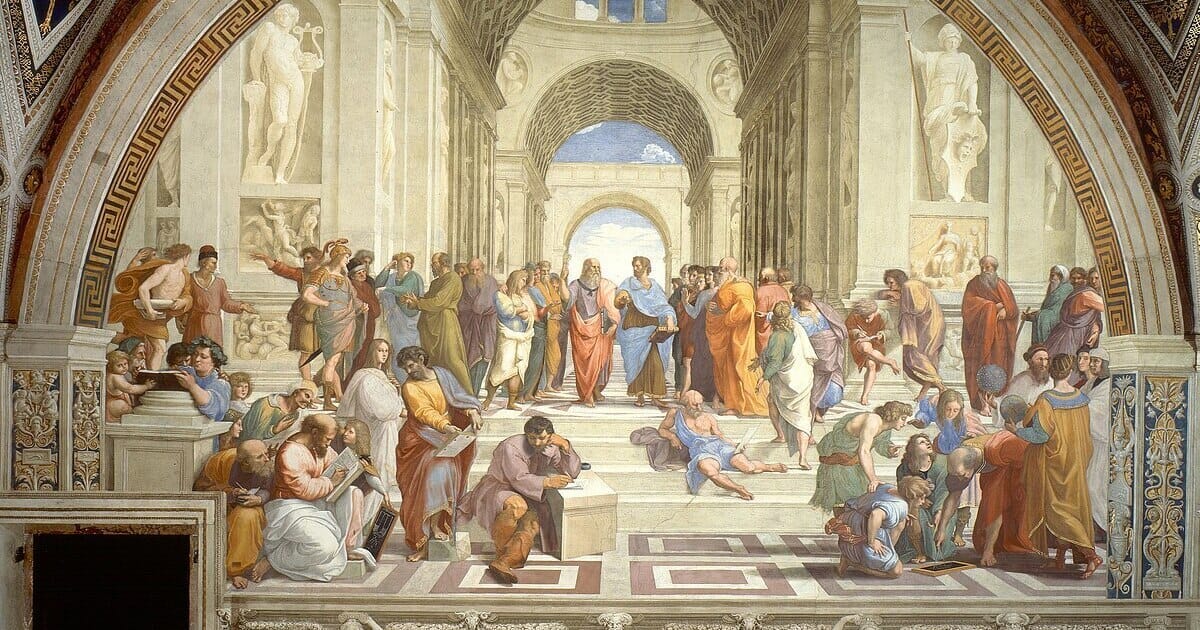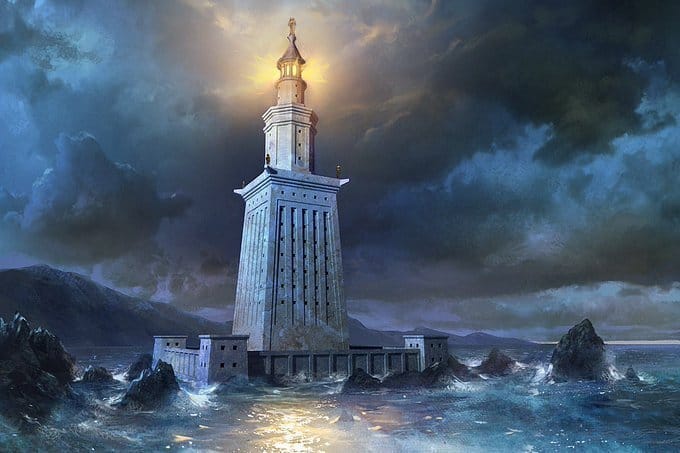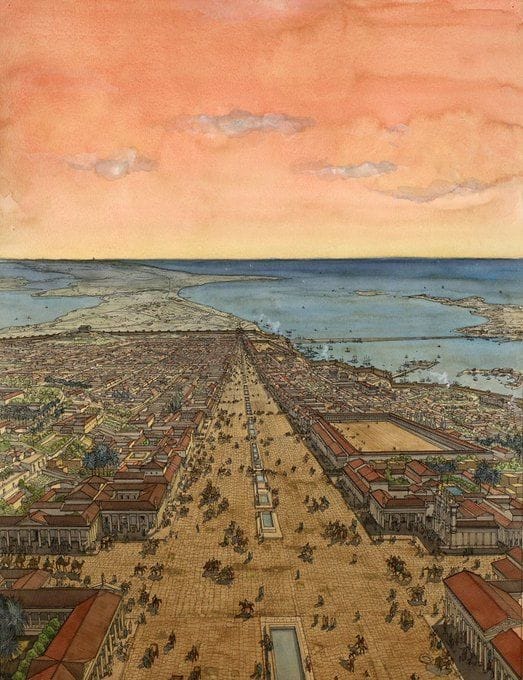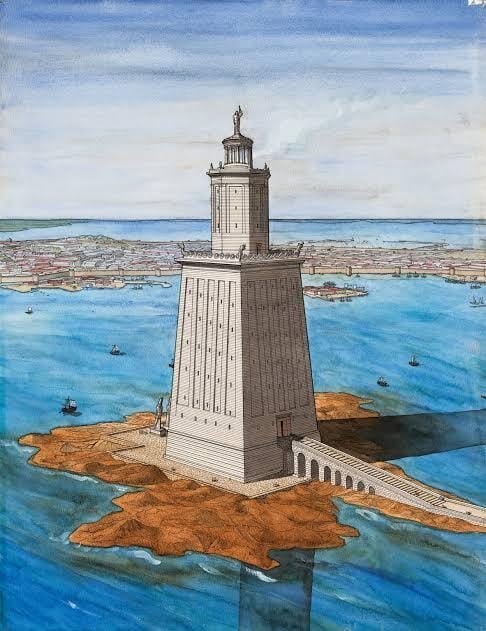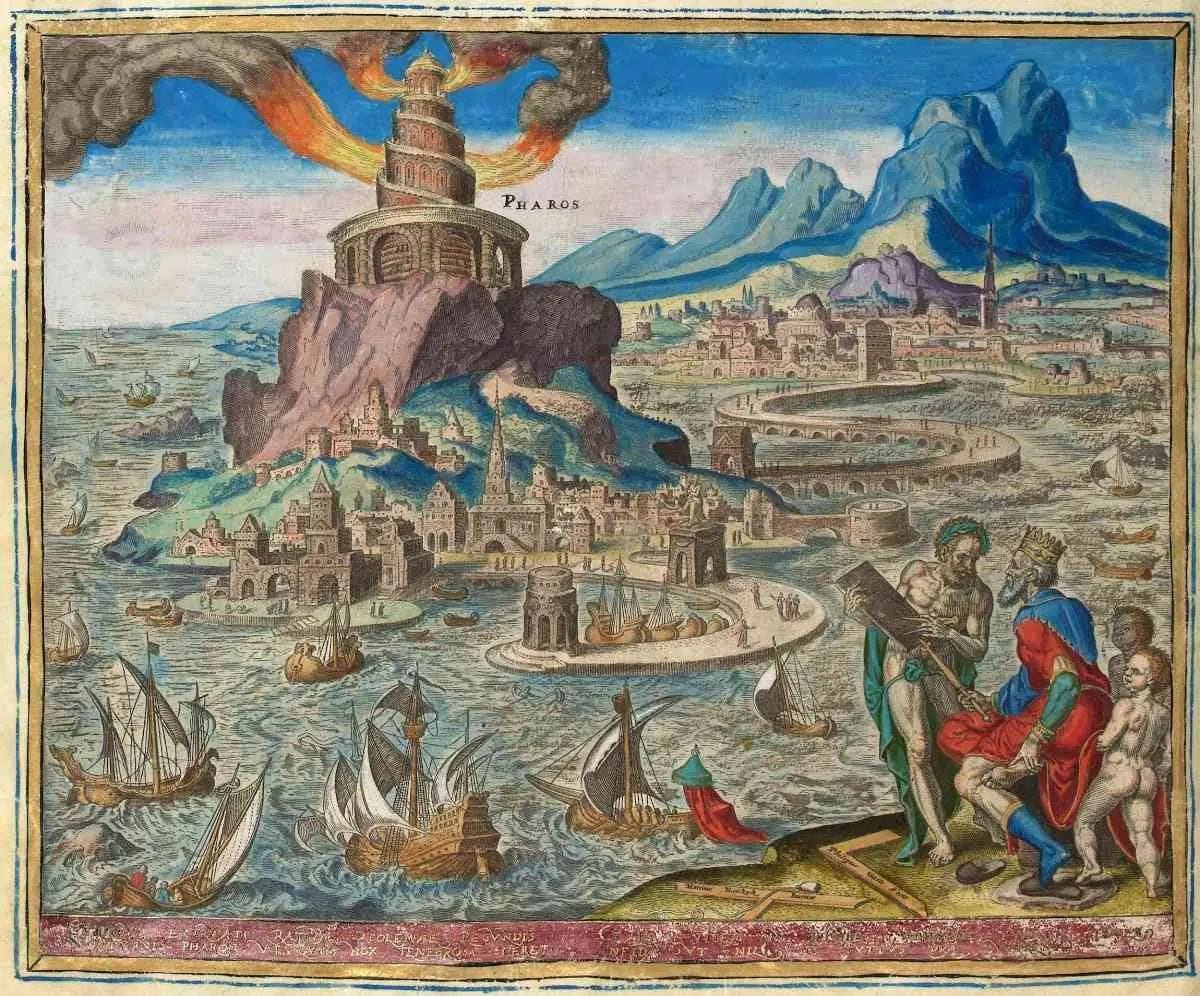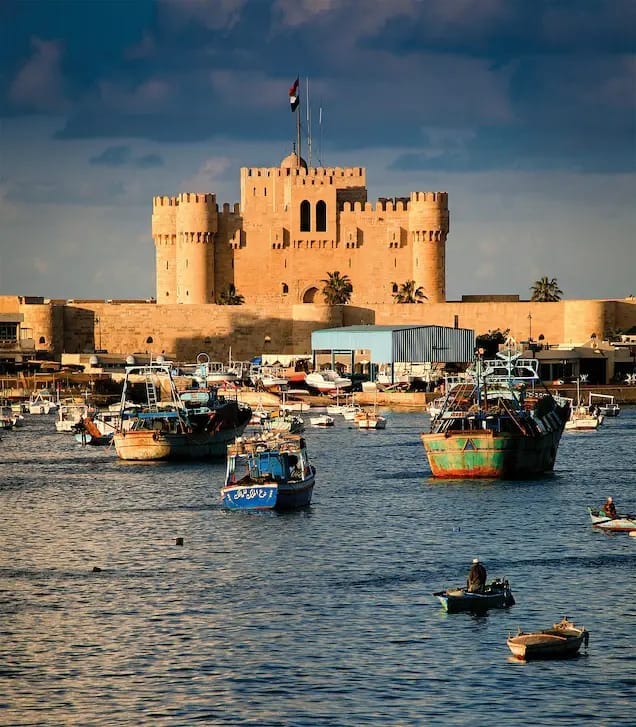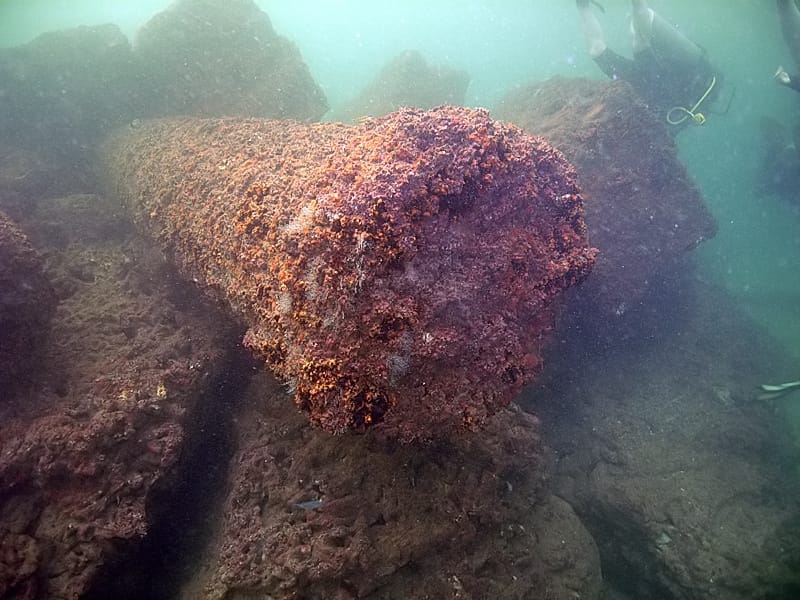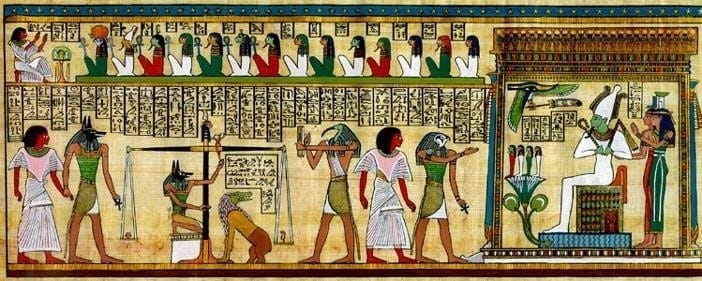Lighthouse of Alexandria: A beacon of Light
The ancient beacon that guided sailors and hid secrets lost to time.
Today’s article is brought to you by World Scholar on the X social media platform. You can also check out his newsletter, the House of Wisdom, here:
Egypt was a beacon of light for the world, not just because of the vast amount of ancient knowledge hidden inside the pyramids but also because of the Lighthouse (Pharos) of Alexandria.
It was the youngest of the 7 Ancient Wonders of the World and outlasted only by the Mausoleum at Halicarnassus and the Great Pyramid of Giza. And a marvel of ancient engineering, so much so that a project in 2015 was put forward to rebuild it to guide the shores once again.
“The voyage along the coast of this sea [the Mediterranean] is exceedingly long, and any landing is especially difficult; for from Paraetonium in Libya as far as Iopê in Coele-Syria, a voyage along the coast of some five thousand stades, there is not to be found a safe harbour except Pharos.” — Diodorus Siculus
Alexandria was founded by none other than Alexander the Great himself in 331 BC. The story goes that because he had no chalk to draw the city plans, he used grains of barley instead. Sometime later, nothing was left after a flock of birds came down and ate his work—but that was a good thing.
In the view of Alexander’s advisers, the city he was building would be plentiful in resources and would feed the whole world.
At one point, Alexandria was the biggest city in the world, both by population and by the wealth of knowledge it held. In its great library rested the greatest collection of books known to ancient man: some say it had over 700,000 scrolls during its peak.
So, it comes as no surprise that another wonder, whose story would echo throughout the world would be built in Alexandria.
Around 305 BC, Ptolemy I Soter became the king of Egypt, commissioning what we think is the first lighthouse in history: the Lighthouse of Alexandria, which would be completed during his son’s, Ptolemy II Philadelphus, reign 12 years later. The total cost was staggering for its time — 800 talents of silver, or around $3 million in today’s money.
(For comparison, the Parthenon, in Athens, that we all know and love, cost roughly 469 talents to build).
The original structure is believed to have stood at around 360 ft (110 m) tall, on a small island just off the coast of the main city. When it was completed, it stood as the tallest man-made structure in the world, second only to the pyramids.
The whole structure was divided into three parts.
The first section was square, housing storage rooms, living quarters for workers, and a spiral ramp or staircase leading upwards. The second section was octagonal, a clever design choice to help distribute weight as the tower ascended. And the third was cylindrical, with a great open flame that would guide ships at the top.
To build such a colossal structure, enormous blocks of limestone and granite were precisely cut and fitted together using molten lead to seal the joints—an ingenious method to absorb shocks from the earthquakes that would come.
We know from unearthed ancient Roman coins that a statue of Poseidon or Zeus stood on top and a statue of Triton (Poseidon’s son) was placed on each corner.
One of the most important descriptions of the lighthouse comes from the Arab traveler Abu-Haggag Al-Andaloussi:
“The Pharos rises at the end of the island. The building square, about 8.5 meters (28ft) each side. The sea surrounds the Pharos except on the east and south sides. This platform measures, along its sides, from the tip, down to the foot of the Pharos walls, 6.5 metres (21ft) in height. However, on the sea side, it is larger because of the construction and is steeply inclined like the side of a mountain. As the height of the platform increases towards the walls of the Pharos its width narrows until it arrives at the measurements above.”
But 2,300 years ago, the Egyptians didn’t have electricity, so how did this lighthouse work?
At the top stood a massive polished bronze mirror, reflecting the sunlight. During the day, this would likely be enough for visibility. But during the night, a fire was lit in a furnace to guide sailors to safety from as far as 34 miles away.
Despite its grandeur, the lighthouse was not immune to natural disasters. The Pharos suffered severe damage from earthquakes, especially in 956, 1303, and 1323 AD. It’s believed that the earthquake in 956 collapsed the top 20 meters of the tower. The lighthouse was rebuilt many times, including a dome that was fixed to the top after its crowning statue collapsed. But unfortunately, by the late 14th century, the lighthouse was largely in ruins.
In 1480, Sultan Qaitbay constructed a fort on the original site using the remaining stones from the destroyed lighthouse. You can still see the fort, known as the Citadel of Qaitbay, today.
Though there is another story that suggests the lighthouse fell apart because the Caliph of Cairo ordered excavations to find treasure after he heard fake rumors spread by the rival Emperor of Constantinople. This story is unlikely since visitors in 1115 reported that Pharos was still intact and operating as a lighthouse.
But the fort isn’t the only fragment of the Pharos you can see today. In 1968 and 1994, we rediscovered this wonder beneath Alexandria’s old port. Alongside, we found 60-ton blocks of granite from Cleopatra’s Palace, 30 sphinxes, and 5 obelisks that are believed to be from the time of Ramses II, 1,000 years before the lighthouse was built.
This is the Pyramid of Cestius, the only pyramid in Rome.
But contrary to popular belief, it wasn't built alone 2,047 years ago — and neither was it Egyptian.
Here's what we know about Rome's most unusual wonder... 🧵
“Truth is the foundation of all enduring things.
Amenhotep III



